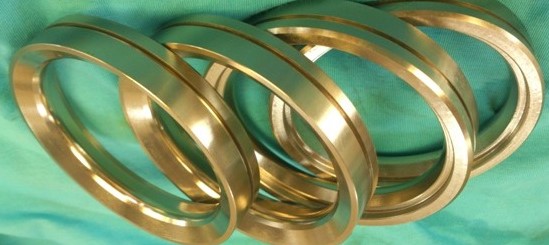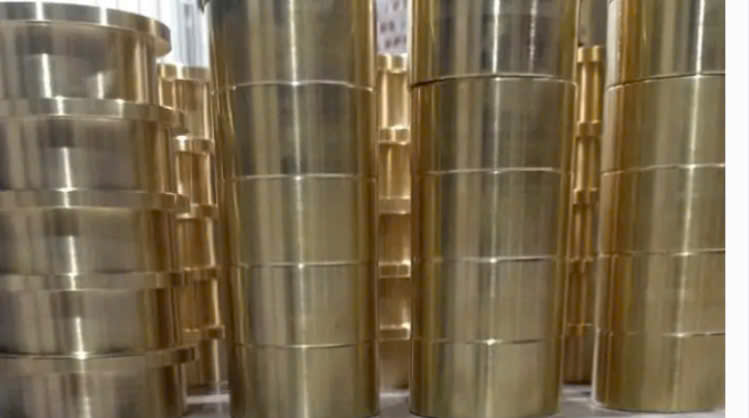What is copper alloy? Copper alloy applications & composition
Copper alloys have long been known as one of the important and commonly used materials in the manufacturing and production industry. With the combination of copper and other metals, copper alloys bring outstanding properties such as high durability, good electrical conductivity and effective corrosion resistance. The development of modern manufacturing technology has opened up many new applications for copper alloys, from electronic devices to construction products.
What is copper alloy?
Copper alloy is a material made from copper (element) when combined with other chemical elements such as tin, lead, zinc, silver, gold and antimony. This alloy is notable for its good corrosion resistance under normal environmental conditions. Although the electrical conductivity of copper alloy is not as good as pure copper, it possesses superior mechanical properties and casting ability.
Learn about the crystal structure of copper alloys
The crystal structure of copper alloys has the following main characteristics:
- Structurally, copper alloy has a characteristic cubic crystal structure and a distinct red color. When polished or subjected to force, it exhibits a striking metallic luster.
- Compared to other alloys, copper and copper alloys stand out for their malleability and formability. Thanks to this property, copper can be worked into various shapes such as sheets and coils.
- Copper alloys are notable for their superior electrical conductivity, thermal conductivity and corrosion resistance. In addition, with their good biofouling resistance, high machinability and non-magnetic properties, copper alloys are widely used in many fields.
- In terms of electrical conductivity, copper alloy is second only to silver, with an electrical conductivity efficiency of up to 97%, so it is widely used in the power transmission industry.
- Corrosion resistance of copper alloys: Copper has good corrosion resistance in any environment such as water, salt, soil, air, acid or alkaline solution. This is due to the protective oxide layer that adheres tightly to the surface, making copper waterproof and providing high protection.
- Oxidation surface properties: All copper alloys form a green oxide layer when exposed to the external environment. Therefore, copper alloys often change from brown to black depending on environmental conditions.
- Solderability of copper alloys: In most copper alloys, solderability is utilized for electrical connections. Therefore, copper alloys are commonly used for screws and rivets.
- Effect of working temperature: Copper alloys can work in both hot and cold temperature environments. To restore the ductility of copper, annealing can be applied, which requires specific and detailed brazing procedures.
- Bronze casting and forging process: Forging or casting bronze for production requires many different methods, the most common of which are annealing, cold or heat treatment by hardening.
Mechanical and physical properties of copper alloys
Copper alloy is a material made from pure copper combined with other elements such as tin, zinc, nickel, aluminum… This combination gives copper alloy superior properties compared to pure copper, meeting diverse needs in many industrial fields.
Outstanding physical properties:
- Good electrical and thermal conductivity: Copper alloys still retain high electrical and thermal conductivity, however the level will vary depending on the alloy composition.
- Good corrosion resistance: Copper alloys have better resistance to oxidation and corrosion in natural environments than pure copper, especially when alloyed with tin.
- Variety of colors: Depending on the alloy composition, the color of copper alloys can vary from the characteristic red color of pure copper to yellow, white or other colors.
- Good machinability: Copper alloy has high ductility, is easy to bend, easy to cut, convenient for manufacturing products with complex shapes.
Typical mechanical properties:
- High strength: Compared with pure copper, copper alloy has higher mechanical strength and can withstand greater impact force.
- High hardness: Some copper alloys have high hardness, suitable for applications requiring high wear resistance.
- Good elasticity: Some copper alloys have good elasticity and are used to make springs and diaphragms.
Types of copper alloys
Copper alloys include many different types, the most common of which are brass, bronze, copper, cupro-nickel and other modern forms of copper alloys. These types are all highly applicable in today’s life.
Copper alloys can be classified based on the number of chemical elements mixed in. Specifically, there are two main groups: binary copper alloys with one chemical element and multi-element copper alloys, which combine many different types of elements.
Brass
Brass is an alloy consisting mainly of copper and zinc, with the proportions of these two elements being varied, creating many different types of brass.
Brass is commonly used in the manufacture of decorative items, electrical equipment and welding. In terms of color, brass is yellow, but the color can vary depending on the zinc content of the alloy.
Compared to other copper alloys, brass is easier to work with and has a lower melting point, making it an ideal choice for making machine parts that have good electrical conductivity.
Alloy of copper and tin
This alloy, also known as bronze, is one of the first alloys to be widely used. It is characterized by high ductility and strength, along with excellent wear resistance. Thanks to these properties, bronze is mainly used in the chemical industry and in the production of machine parts that require good wear resistance. In addition, bronze is also combined with other materials such as nickel, zinc, lead, and phosphorus to enhance its application and reduce production costs.
Alloy of copper and nickel
Copper and nickel alloys are also known as white bronze. In addition to copper and nickel, this alloy also contains additives such as manganese and iron. The addition of nickel improves the tensile strength and wear resistance of cupronickel alloys, making them easier to machine.
Modern forms of copper alloys
In addition to the common copper alloys mentioned above, there are now many modern copper alloys, which are combinations of copper and other elements such as iron, lead, aluminum, nickel, silicon, bilberry and chrome.
Using these modern copper alloys not only helps reduce raw material costs but also ensures the superior properties of copper alloys. For example, aluminum bronze stands out for its corrosion resistance, while berry copper offers superior mechanical properties. Therefore, depending on the purpose of use and production requirements, you can choose the appropriate copper alloy.
What are the applications of copper alloys?
Copper alloys are increasingly popular today. Each type of alloy has its own advantages, making them suitable for many different industries such as:
- Architecture and construction: Used in both interior and exterior.
- Car manufacturing: Plays a vital role in the design elements of modern cars.
- Electrical industry: Due to its good electrical conductivity, copper alloys are widely used.
- Piping Systems: Manufacture of copper pipes for water pipes and fire sprinklers.
- Gas Industry: Copper alloys are used in natural gas pipeline systems.
- Electronics: Widely used in the manufacture of electronic devices.
- Applications in marine environments: Used to produce materials that can withstand the harsh conditions of the marine environment.
- Product processing: Production of products such as copper bars and copper alloy plates.
- Telecommunications: Used in the production of copper wires for frequency transmission.

Production process of copper and copper alloys
Copper metal production process
- Mining and extraction of copper from ore: Copper ore is mined, then crushed and processed to separate the copper metal from other minerals.
- Smelting: The separated copper is melted at high temperature to turn into liquid.
- Casting: Liquid copper is poured into molds to form copper bars or sheets.
- Rolling and stretching: Copper bars or sheets are rolled and stretched to produce products such as wire, copper foil or copper tubing.
Brass alloy manufacturing process
- Raw material preparation: Copper and zinc (or other raw materials) are measured and prepared in the exact proportions required by the alloy.
- Mixing and melting: The raw material is fed into a furnace where melting takes place to create the brass alloy.
- Casting and shaping: Liquid brass alloy is poured into molds and shaped according to product requirements.
- Cooling and machining: The cast product is cooled and machined to achieve the desired size and shape.
- Quality Control: Final products are inspected to ensure they meet quality standards.
- Curing: The process also includes curing steps such as surface cleaning and heat treatment to improve the properties of the product.
To meet the diverse production and application needs, copper alloys have become the preferred choice thanks to their outstanding properties such as good electrical conductivity, high durability and effective corrosion resistance. The use of copper alloys not only brings economic value but also contributes to improving product quality in many different industries. Consider using copper alloys to take full advantage of the benefits that this material brings.



Very good https://is.gd/N1ikS2
Very good https://is.gd/N1ikS2
Good https://is.gd/N1ikS2
https://shorturl.fm/FIJkD
https://shorturl.fm/9fnIC
https://shorturl.fm/68Y8V
Maximize your income with our high-converting offers—join as an affiliate! https://shorturl.fm/Zmgi2